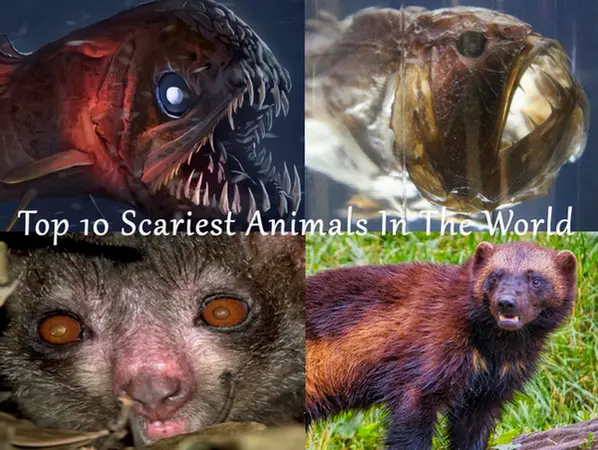The world we live in is quite strange, created by nature, and inhabited by strange creatures. In this era of the internet, we learn about such new animals daily. There are so many beautiful and intelligent animals that exist in the world. But do you know, there is a lot of animals in the world which has no brain? Yes, it’s true. After a lot of research, we have created this helpful article for you. So make sure to read the full article for proper and complete information.
See how these amazing animals accomplish basic tasks without a brain to give them direction.
Which animals do not have a brain?
Table of Contents
Scientists have continued to prove that animals can be trained and exposed to culture just like humans, but the question still remains; do all animals have a brain?
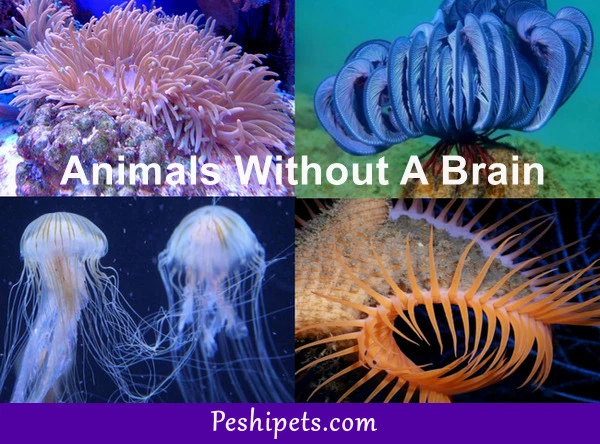
There are some amazing animals in the world that don’t have brains. Finding out which animals lack this vital organ and why is a captivating pursuit, so let’s take a look at some of the most common animals without brains.
1. Jellyfish
There is a family tree of jellyfish called jellies. Most jellyfish do not have brains, except for one specific jellyfish that will be discussed further in this article.
It is one of the very few animals without a brain that does not stay in the same place for its entire life. Jellyfish can move like waves in the sea to any corner. That is why jellyfish are often seen on the beach. Sometimes they even come out of the water due to the excessive flow of the waves. In addition, it can squirt water through its mouth to push itself forward.
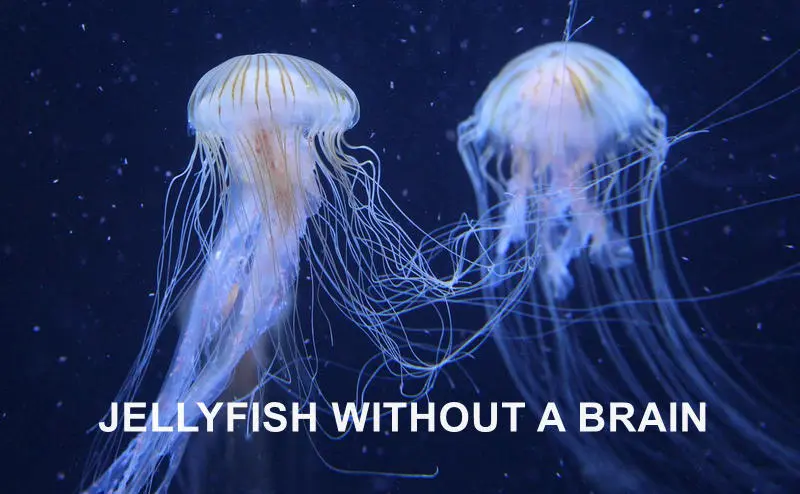
Now the question is, how does the jellyfish make sense of all this without having a brain?
There is a unique network of sensory nerves in jellyfish. Their tentacles are very sensitive, and it reacts instantly when something touches them. Their tentacles are very dangerous, and they can kill other animals. This is the reason people should maintain a distance from jellyfish underwater.
When something touches its tentacles, it instantly reacts by shooting out its sting with a toxin to kill or neutralize an enemy. This is why you should steer clear of jellyfish in the water. It will not come close to you on its own, but if you get too close, it may sting you.
For your convenience, we have created a helpful article on, What Do Jellyfish Eat? How Does It Consume Food? Here Are Some Surprising Facts.”
But are all jellyfish brainless?
The answer is no. It is only the Comp Jelly that has a brain among all jellyfish species. Scientists have discovered some remarkable facts In the process of sequencing the genome of the Comb Jelly.
In spite of the fact that it doesn’t have a brain, it has a brain-like structure in its nervous system that allows it to perform rather complex tasks.
2. Sea Anemones
Sea anemones are one of the most common ocean dwellers that looks like plants. The name “sea anemone” belongs to a large group of marine animals, and these animals vary in appearance and size. They come in all different colors and shapes, but they are typically found attached to a rock or coral reef buried under sand or other substrates. This creature’s tentacles are used to eat, just like those of the jellyfish.
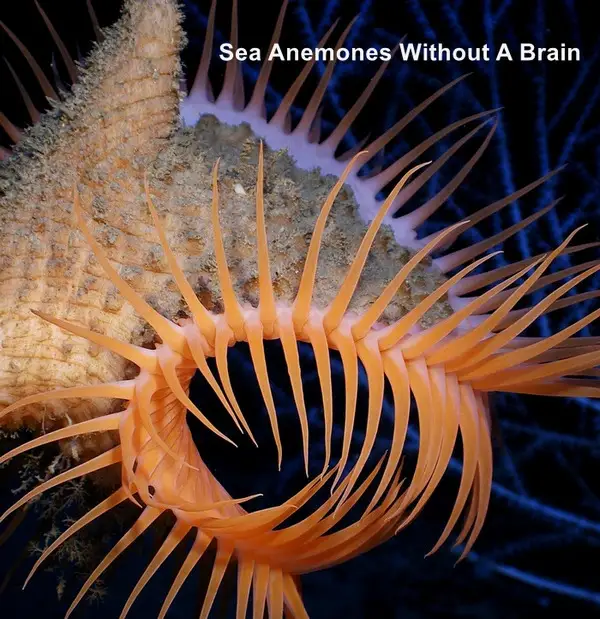
The sea anemones look very beautiful and change their shape over time. Due to its sensors can respond to its surroundings even though it does not have a brain.
3. Sea Cucumbers
The sea cucumber has leathery skin and an elongated body with a single, branched gonad. The sea cucumber can be found anywhere in the world on the sea floor.
Sea cucumbers don’t have brains. The oral cavity is surrounded by a ring of neural tissue, which sends nerves to the tentacles and pharynx.
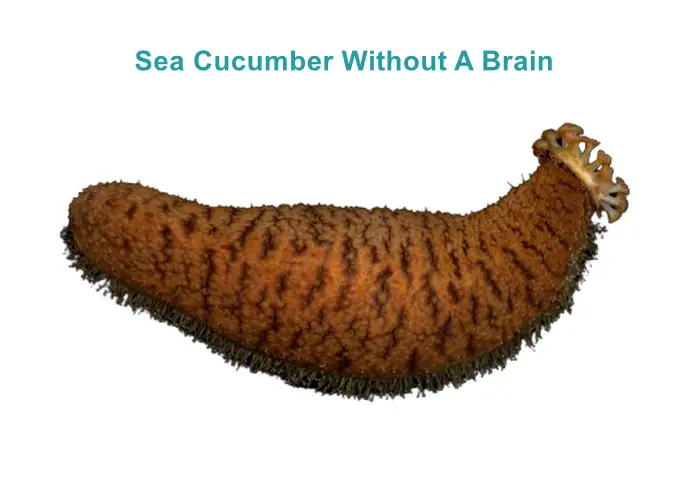
Despite this, it can function and move without the nerve ring, demonstrating that it does not play a central role in the coordination of the nervous system. There are also five primary nerves that run along the length of the body beneath each of the ambulacral areas.
In most sea cucumbers, there are no distinct sensory organs, but different nerve endings scattered throughout the skin give them a sense of touch and a sensitivity to light. However, some species are known to have small eye spots near the bases of their tentacles, such as those in the Apodida order.
4. Sea Lilys
A sea lily is a crinoid marine invertebrate that is attached to the sea bottom through its stalk, just like Sea Cucumbers. In the ocean, they sit permanently attached to the bottom. Their feathery arms make them look like plants. It is not tough to figure out that Sea Lilys don’t have brains.
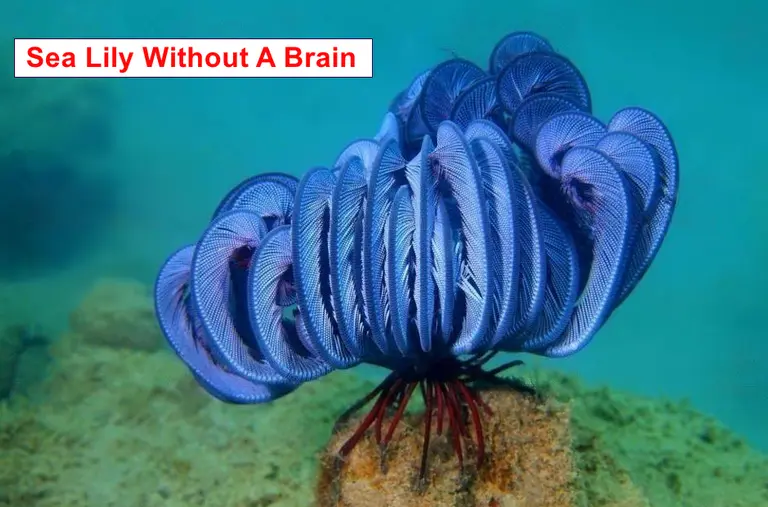
Based on fossil evidence, it is estimated that their ancestors might have grown up to 80 feet tall. Sea Lilys have small mouth at the center of their body. Many species have been observed to float to another spot more suitable for eating after leaving their original place.
Due to their location at the bottom of the ocean, they are unable to see the sunlight. It’s, therefore, necessary for them to rely on another source of energy. Most of the time, they feed on animals’ excrement that floats down towards the bottom of the ocean.
5. Corals
Corals also belong to the Cnidarians family, just like jellyfish. They are composed of a multitude of tiny animals called coral polyps. They also belong to Cnidarian’s family just like Jellyfish. All of them have asymmetrical bodies and are capable of stinging their enemies.
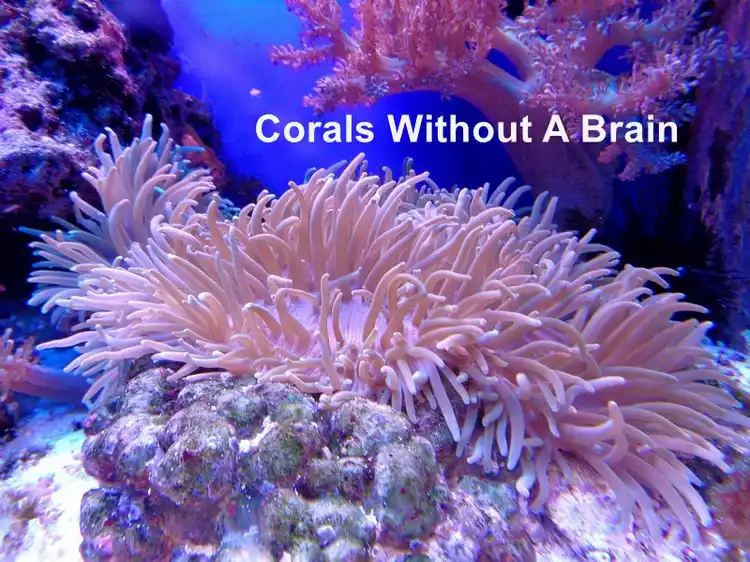
In spite of the fact that corals look like plants, they are actually animals. A major difference between plants and animals is that plants produce food, while animals must hunt for it. They are very simple animals, which makes sense; they do not possess a brain.
Most corals obtain the majority of their energy and nutrients from photosynthetic unicellular dinoflagellates of the genus Symbiodinium that live within their tissues, even though some corals have stinging cells on their tentacles.
Corals are colored by zooxanthellae, which are commonly known as zooxanthellae. A coral of this type needs sunlight and grows best in clear, shallow water, usually under 200 feet deep.
What is the reason for these animals not having brains?
The animals such as Jellyfish, Sea Anemones, Sea Cucumbers, Sea Lilys, and Corals don’t have a brain because they don’t need it.
A brain consumes a great deal of energy to function properly. If the body does not need a brain, then it’s better not to have one since it allows the animal to eat less to stay alive. Whether animal or human, the brain consumes 20 percent of the body’s energy.
It is believed that many of these animals once had brains but lost them in order to survive. The lack of a brain makes them much more energy-efficient, particularly when they are underwater.

